#kunsthalle wien
Text
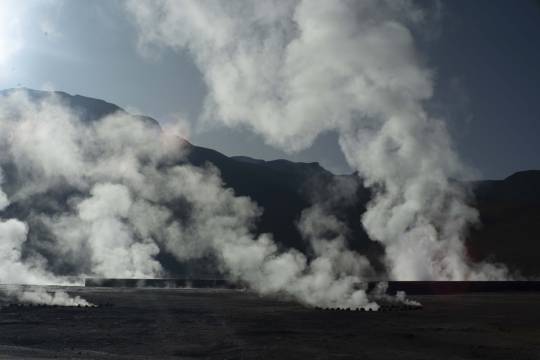
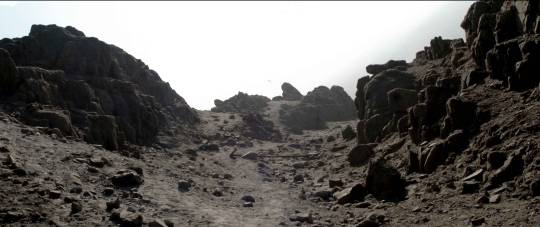
Denise Ferreira da Silva & Arjuna Neuman, Ancestral Clouds Ancestral Claims
(my beloveds will be presenting a new film in one of my most favourite spaces - Kunsthalle Wien https://kunsthallewien.at/en/exhibition/denise-ferreira-da-silva-arjuna-neuman/)
#denise ferreira da silva#arjuna neuman#if money wasn't an issue I'd def travel for this - I really love Vienna anyway
12 notes
·
View notes
Text
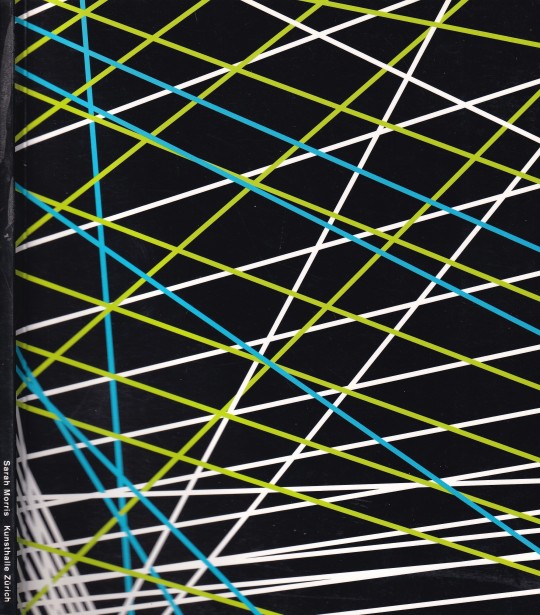
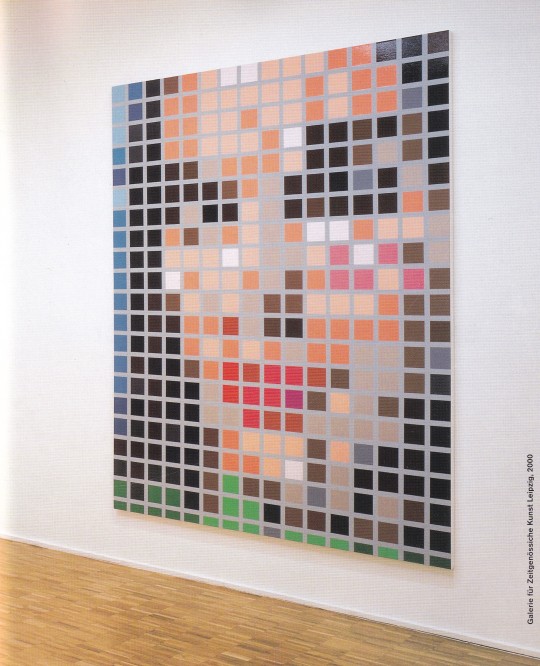
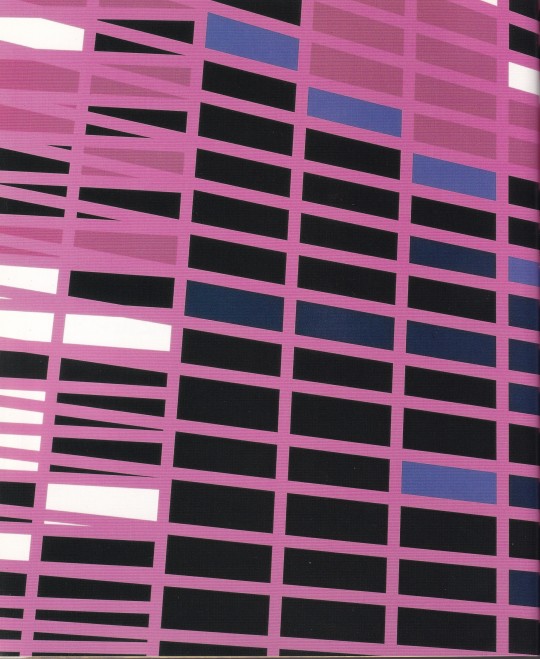
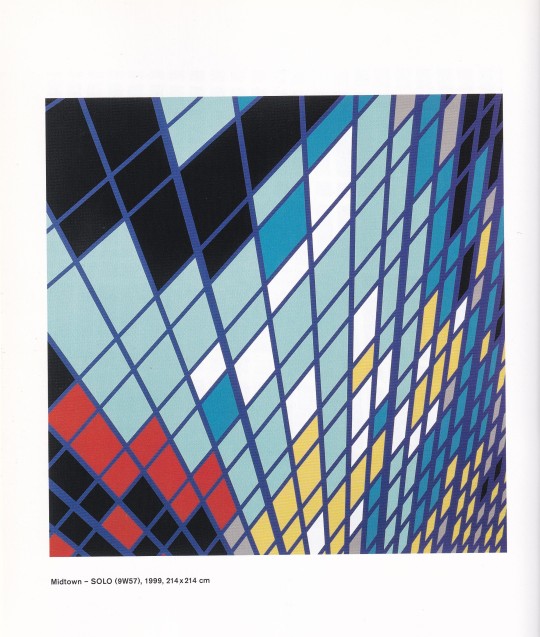


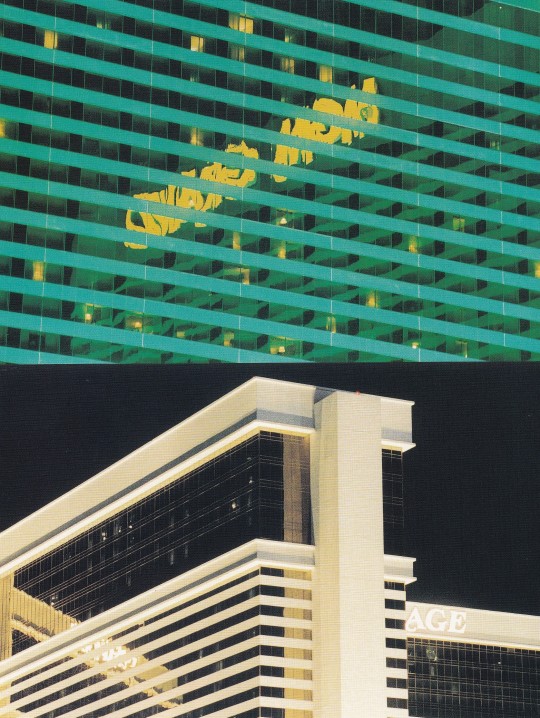
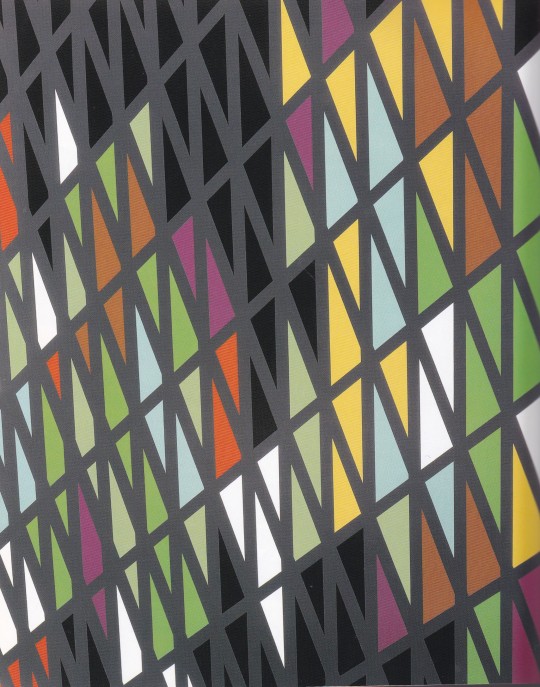
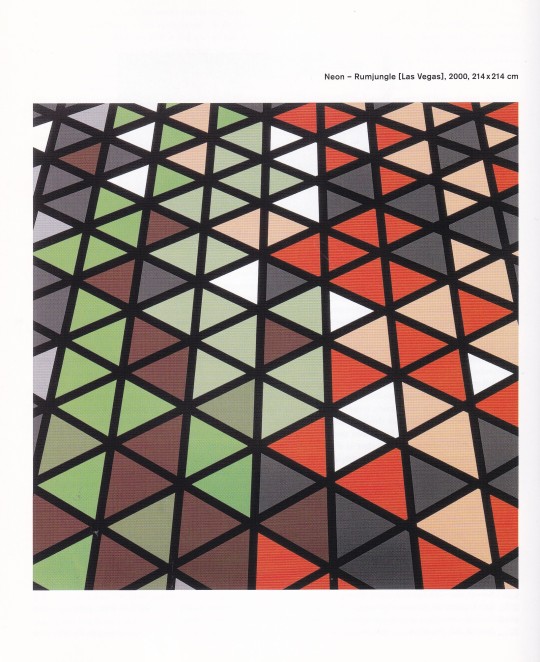
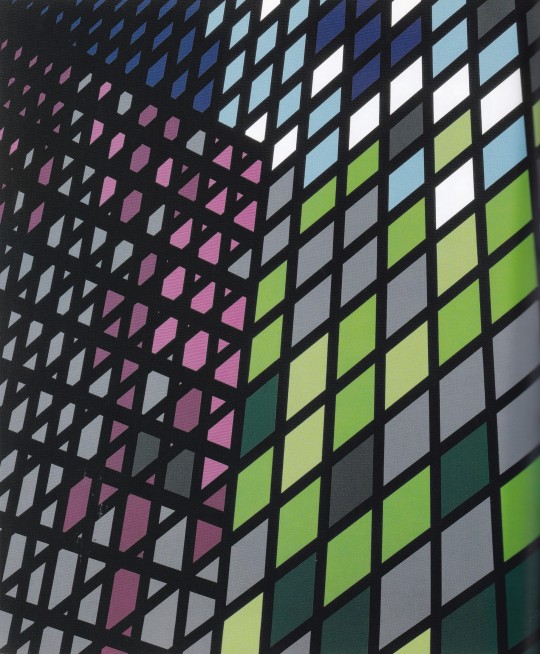
Sarah Morris
texts by Bernhard Bürgi, Diedrich Diederichsen, Sarah Morris, David Daniel
Kunsthalle Zürich 2000, 80 pages,with 54 color images, 21x24,5cm, German/Engl.
euro 50,00
email if you want to buy [email protected]
Exhibition Zürich 07/06 13/08 2000
Sarah Morris (b. 1967 in Sevenoaks, Kent, England) lives and works in New York City, USA. Morris studied at the Brown and Cambridge Universities and participated in the Independent Study Program of the Whitney Museum of American Art. She is best known for her large-format raster works.
Her works have been presented in solo shows at institutions including the Philadelphia Museum of Modern Art, Philadelphia, USA (2000), Kunsthalle Zürich, Zurich, Switzerland (2000, 2012); Hamburger Bahnhof, Berlin, Germany (2000, 2001); Hirshhorn Museum, Washington D.C., USA (2002); Miami MOCA, Miami, USA (2002); Moderna Museet, Stockholm, Sweden (2005); Palais de Tokyo, Paris, France (2005); Städtischen Galerie in Lenbachhaus, Munich, Germany (2008); Fondation Beyeler, Basel, Switzerland (2008); Museum für Moderne Kunst, Frankfurt am Main, Germany (2009); Fondation Louis Vuitton in Paris, France (2014), Kunsthalle Wien, Wien, Austria (2016, 2017) and EMMA - Espoo Museum of Modern Art, Espoo, Finland (2017).
11/01/24
#Sarah Morris#art exhibition catalogue#Kunsthalle Zürich 2000#abstraction#architecture#graphics#art books#fashionbooksmilano
2 notes
·
View notes
Photo
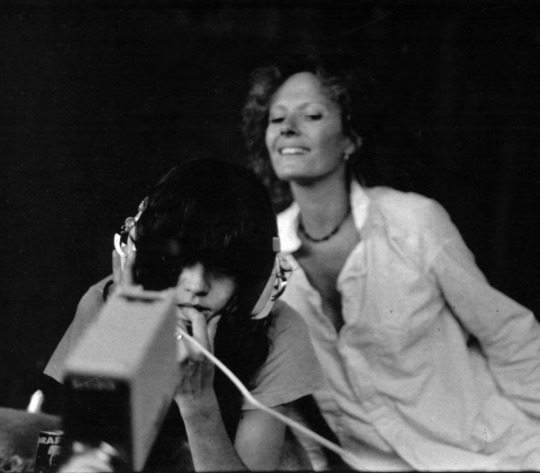
Maria Schneider and Delphine Seyrig during a tour for the film Sois belle et tais-toi! (Be Pretty and Shut Up!), 1975, photographed by Carole Roussopoulos – from the exhibition Defiant Muses: Delphine Seyrig and the Feminist Video Collectives of 1970s an 1980s France at Kunsthalle Wien (Vienna)
25 notes
·
View notes
Text


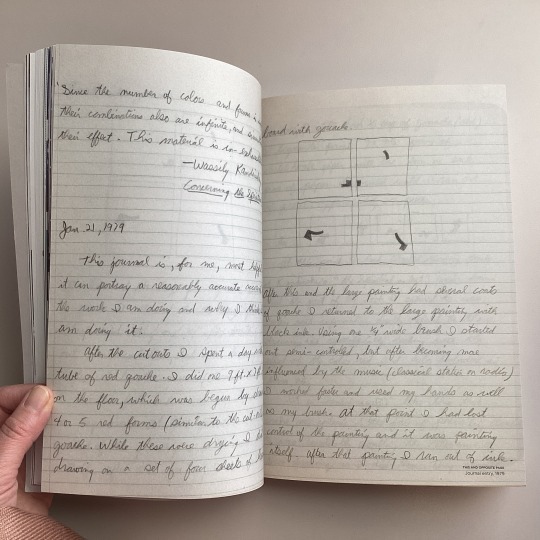

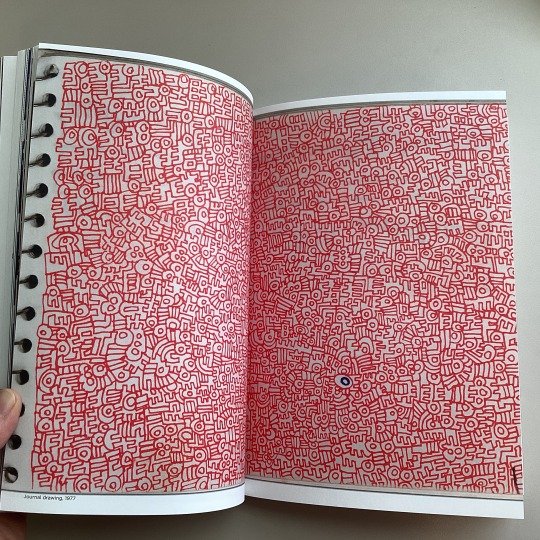
In 1978, Keith Haring wrote the following in his journal:
“It is important to the future existence of the human race that we understand the importance of the individual and the reality that we are all different, all individuals, all changing and all contributing to the ‘whole’ as individuals, not as groups or products of ‘mass identity,’ ‘anti-individual,’ stereotyped groups of humans with the same goals, ideas, and needs.”
His words reflect the time when computers and technology were coming to the fore, complicating the role of artists and their place in the world.
Haring continued: “The role of the artist in human existence is going to be tested and tried. It is possibly the most important time for art the world has ever seen. The artist of this time is creating under a constant realization that he is being pursued by the computers. We are threatened. Our existence, our individuality, our creativity, our lives are threatened by this coming machine aesthetic.”
As humanity has transitioned into computer and internet age in the decades since Haring’s journal observations, how do we see our own existence and the role of artists now? Back then, Haring called on his fellow artists to face the threat: “It is going to be up to us to establish a lasting position of the arts in our daily lives, in human existence.” – Haring, Journal 14.
Image 1: Front cover with journal drawing in red pen from 1977 journal
Image 2-4: Page spreads from Haring’s journal entries with handwritten texts and drawings, 1971-1979
Image 5: Drawing in red pen from Haring’s journal entries, 1977
Keith Haring : 1978-1982
Curated by Raphaela Platow ; [text by Raphaela Platow ... [et al.] ; edited by Lucy Flint].
Author/Creator: Haring, Keith.
Cincinnati : Contemporary Arts center ; Vienna : Kunsthalle Wien ; Nürnberg : Verlag für moderne Kunst Nürnberg, 2010.
253 p. : chiefly ill. ; 25 cm.
English
Catalogue accompanies the exhibition, Keith Haring: 1978-1982, held at the Kunsthalle Wien, Vienna, May 28-Sept.19, 2010 and the Contemporary Arts Center, Cincinnati, Feb. 26-Sept. 5, 2011.
HOLLIS number: 990126394840203941
#Keithharing#journal#journalentry#LGBTQ#LGBTQIA#LGBTQIAPridemonth#pridemonth#facsimile#Gayartist#HarvardFineArtsLibrary#Fineartslibrary#Harvard#HarvardLibrary#harvardfineartslibrary#fineartslibrary#harvard#harvard library#harvardfineartslib#harvardlibrary
23 notes
·
View notes
Text
Architekturmuseum Wroclaw, PL
Barbican Centre, London, GB
Bard Graduate Center New York, US
Berlinische Galerie Berlin, DE
Berner Design Stiftung
Bröhan–Museum, Berlin, DE
Buchheim Museum Bernried, DE
Bundeskunsthalle Bonn, DE
Caixa Forum, Madrid, ES
Centre d’innovation et de design au Grand-Hornu, Hornu, BE
Centre Pompidou Metz, FR
Cité internationale de la tapisserie Aubusson, FR
CIVA, Bruxelles, BE
Designmuseum Danmark, Kopenhagen, DK
Fine Arts Museum of San Francisco, US
Fondazione Nicola Trussardi Milano, IT
Hamburger Bahnhof Berlin, DE
Henie Onstad Kunstsenter, NO
Henry Moore Institute, Leeds, UK
Hong Kong Design Institute Gallery, HK
Hortamuseum Brüssel, BE
Kaiser Wilhelm Museum, DE
Kunst Haus Wien, AT
Kunstforum Wien, AU
Kunsthalle Bielefeld, DE
Kunsthaus Graz, AT
Kunstmuseum Stuttgart, DE
Kunstmuseum Wolfsburg, DE
La Caixa, Barcelona, ES
Landesmuseum für Kunst und Kulturgeschichte Oldenburg, DE
Landesmuseum Mainz, DE
Leopold Museum Wien, AT
Lieu du Design, Paris, FR
Louisiana Museum of Modern Art, Humlebaek, DK
MART – Museo di Arte Moderna e Contemporanea di Trento e Rovereto, IT
Mathildenhöhe Darmstadt, DE
McCord Museum, CA
Meguro Museum of Art, Tokyo, JP
MNAC Museu Nacional d’Art de Catalunya Barcelona, ES
Modemuseum Provincie Antwerpen, BE
Moderna Museet, Stockholm, SE
MoMA Museum of Modern Art, New York, US
Musée d’Art moderne de la Ville de Paris, FR
Musée d’Art Moderne et d’Art Contemporain, Nizza, FR
Musée d’Etat des Beaux-Arts Pouchkine, Moscou, RU
Musée d’Orsay Paris, FR
Musée des Arts Décoratifs, Paris, FR
Musée Picasso Paris, FR
Musées royaux d’Art et d’Histoire, Brüssel, BE
Museo del Vetro Venedig, IT
Museo Nazionale Romano, IT
Museo Picasso Málaga, ES
Museu Picasso, Barcelona, ES
Museum Abteiberg, Mönchengladbach, DE
Museum für angewandte Kunst Frankfurt am Main, DE
Museum für Angewandte Kunst, Wien, AT
Museum für Kommunikation Berlin, DE
Museum für Kommunikation Frankfurt am Main, DE
Museum für Kunst und Gewerbe Hamburg, DE
Nationalgalerie Prag, CZ
Neue Galerie New York, US
Neues Museum Weimar, DE
Nottingham Contemporary, GB
Palacio de Aramburu, Tolosa, ES
Palazzo Roverella, Rovigo, IT
Schirn Kunsthalle Frankfurt, DE
Schloss Wernigerode, DE
Staatsgalerie Stuttgart, DE
Städtische Galerie Karlsruhe, DE
Stavanger Art Museum, NO
Stedelijk Museum de Lakenhal, Leiden, NL
Stiftung Kunstsammlung Nordrhein-Westfalen, Düsseldorf, DE
Tap Seac Gallery Macau, MO
TextielMuseum Tilburg, NL
Textilmuseet, Textile Fashion Center Boras, SE
Victoria and Albert Museum London, GB
Villa Bardini, IT
Vitra Design Museum, Weil, DE
3 notes
·
View notes
Photo
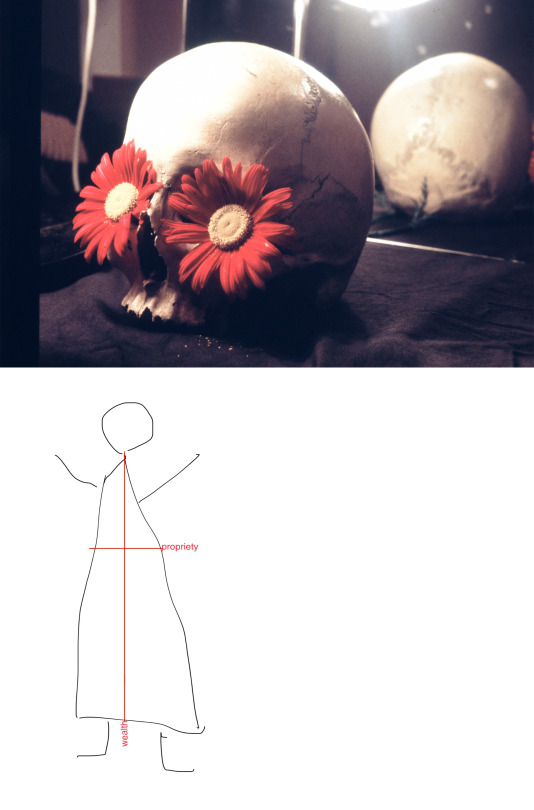
Lecture
Anna-Sophie Berger: Wealth & Propriety
Tuesday, 06.12.2022, 7 pm, Dürerstraße 10, 60596 Frankfurt am Main, aula
Wealth & Propriety is the title of two of Anna-Sophie Berger's most recent exhibition projects. They are accompanied by an image of a stick-figure wearing a dress on which arrows are drawn like axes, labeled with the designations "wealth" and "propriety". The lecture will explore these terms literally and formally as they relate to art and to Berger's practice.
Anna-Sophie Berger (b. 1989, Vienna) is an artist living and working in New York and Vienna. She was trained in fashion and creates work that connects individual perception and intimate use with questions of material reality as part of socio-economic circulation and consumption. Berger has had solo exhibitions at Bonner Kunstverein (2020); Cell Project Space, London (2019); MUMOK, Vienna (2016); Kunsthaus Bregenz (2016); Ludlow 38, New York (2015); White Flag Projects, St. Louis (2015); and Belvedere21, Vienna (2014); among others. She has recently participated in group exhibitions at the Pictures Collection of the Academy of Fine Arts, Vienna (2022); The Glucksman, Cork (2022); MACRO Museum, Rome (2021); MAK, Austria (2019); Kunsthalle Wien, Vienna (2019); Frans Hals Museum, Haarlem (2018); S.M.A.K., Ghent (2018); Contemporary Art Centre, Vilnius (2018); Kestnergesellschaft, Hannover (2017); Kunstverein München, Munich (2017). She is the recipient of the 2017 Ars Viva Fine Arts Prize in Germany and the 2016 Kapsch Contemporary Art Prize, Austria.
The lecture will be held in English language.
2 notes
·
View notes
Text
Unbestimmte Linien, Aneignungen und mehr
Die Achse Wien Düsseldorf muss stehen, Peter Hein sieht das wahrscheinlich ähnlich, aber das ist ein Thema für vielleicht später einmal. Schrammel hatte vor kurzem spontan die Vernissage zur Peter Piller-Ausstellung ‚there are a couple of things that bother me‘ in der Kunsthalle Düsseldorf besucht, und deren und Pillers prominentes Thema ‚Prähistorische Höhlenmalerei’ sickerte subtil, aber stetig weiter in sein Bewusstsein ein...
youtube
So war es keine große Frage, Pillers ergänzenden Vortrag zwei Wochen später im Salon des Amateurs der Kunsthalle zu besuchen. Da Schrammel nach der ausführlichen Schilderung seiner Ausstellungs-Eindrücke das Gefühl hatte, dass Schremser die Folgeverantstaltung ebenfalls interessieren könnte, schlug er ihm ein gemeinsames Ausflugswochenende vor: freitags mit dem Nachtzug ab in die rheinische Metropole, bisschen in der Stadt rumtreiben, Vortrag mitnehmen und abends gegen 22 Uhr ab Düsseldorf wieder zurück nach Wien. Kein Hotelaufenthalt nötig, schlafen könnte man im Zug.
Schremser war darüber noch erfreuter als erwartet, geh leiwand!
Und was soll man sagen, Schrammel hatte nicht zu viel versprochen – Piller hatte die beiden aus dem Sicherheitsbüro mit seinem Vortrag schnell gepackt; eine detailliertere Zusammenfassung des Inhalts würde den Rahmen hier sprengen, aber auf Grund des Gesehenen und Gehörten (was eine ganze Menge war, die Veranstaltung dauerte von 16 bis 19.15 Uhr!) stand doch ein mächtiger Elefant im Raum, den auch auf Nachfrage Pillers niemand der Anwesenden wagte anzusprechen:
Was waren das für Menschen, die vor 12.000 bis 38.000 Jahren zum Malen in eine Höhle gingen, und wo kam für sie der Impuls dazu her?
Das Faszinosum des Themas war so vielschichtig! Natürlich einerseits die Virtuosität der zu sehenden Malereien und Ritzungen, doch mindestens genauso die so vielen nicht zu beantwortenden Fragen, die sich dazu stellen. Die immer mehr zu werden scheinen, je tiefer man in das Thema einsteigt.
Das löste eine Lawine in den Köpfen von Schrammel und Schremser aus, die viele Bereiche betraf: Nicht nur die Mikro- und Makro-Umstände zum Zeitpunkt der Entstehung, sondern auch, was unsere heutige Gesellschaft betrifft vor diesem Hintergrund, die Einordnung des Begriffs ‚Kunst‘ und ob sie wirklich mehr als das ist bzw. sein muss, dass sich die Menschen von damals über uns Neuzeitler und unsere seltsamen Prioritäten im kapitalistischen System extrem wundern würden, uns für absolut wahnsinnig erklären würden? Waren die zu sehenden Werke Ausdruck eines zu jener Zeit ganz normalen Einsseins mit der Natur, das für uns heute etwas wirklich Heiliges ausstrahlt? Oder waren doch Trance oder bewusstseinserweiternde Substanzen oder beides im Spiel?
Und dann die vielen, sich teilweise widersprechenden Deutungansätze der erst gut hundertjährigen Forschung zur Höhlenmalerei, wie wichtig es ist, sich aus unseren einzementierten Denkweisen zu lösen, wenn man sich der Thematik nähern will – denn ruckzuck stellst du dir dann die Frage, was ‚Menschsein‘ wirklich ausmacht und ahnst, wie erschreckend weit wir vom Weg abgekommen sind.
Einschließlich der Frage, ob der moderne Mensch mit seiner zeitgenössischen Kunst medial oft nicht wortwörtlich auf dem Holzweg ist: Die Urheber der Höhlenwerke hatten wahrscheinlich keine Überlieferungs- und Präsentationsabsichten, und doch können wir durch die sehr schlaue Wahl des Mediums Kalksteinhöhle noch nach bis zu knapp 40.000 Jahren die Werke in teilweise leuchtenden Farben bewundern.
Bewegung, Bewegung, Inspiration, Inspiration in den Köpfen, das Alles zog Weltbilder sehr angenehm auf links, einschließlich der Motivation und Ergebnisse der eigenen künstlerischen Handlungen betreffend. Diese kulturelle Exkursion hatte sich mehr als gelohnt!
Schrammel und Schremser unterhielten sich später im Zug noch lange über die gewonnenen Eindrücke, ehe die Müdigkeit die beiden bis kurz vorm Ziel Wien Hauptbahnhof in einen tiefen Schlaf fallen ließ.
Wie schön, das Alles!
.
#dezernat-4#kunst#peter piller#kunstgeschichte#kunsthalle#kunsthalle düsseldorf#salon des amateurs#höhlenmalerei#geschichte#inside schrammel#inside schremser#ausflug#bildungsreise#deutschsprachiger text#deutscher text#halbfiktiv
1 note
·
View note
Photo

Anna Vovan: Letters (slid under a door)
Zeitraum: 26.11.2022–11.12.2022
Vernissage: 26.11.22 | 19:00 Uhr
Öffnungszeiten: FR–SA 18.00–22.00 Uhr | SO 15.00–19.00 Uhr
Anna Vovan ist zu Gast im Fotolabor des Klub Solitaer. Die Werksattresidenz wird eingeleitet von der Werkschau Letters (slid under a door). Darin untersucht die Leipziger Künstlerin die Rolle der Sprache als Vermittlerin zwischen innerer und äußerer Realität. Ihr Interesse gilt dem Moment, in dem zwischenmenschliche Kommunikation misslingt und sich eine Lücke zwischen Sprechen und Verstehen, Denken und Sagen auftut. In diesem Zwischenraum sind ihre Arbeiten verortet. Sie nutzt experimentelle fotografische Techniken wie Fotogramme oder Lumenprints, um in Bildern dem Vorsprachlichen und Nichtsagbaren habhaft zu werden.
Die titelgebende Arbeit Letters (slid under a door) besteht aus analogen Fotopapieren, die wie Briefe zur Hälfte durch den Spalt unter einer Tür hindurch geschoben und mit dem vorhandenen Licht belichtet wurden. In diesen zu Briefen gewordenen Fotogrammen lösen sich Sprache und Text im Bild in Licht und Stimmung auf.
Anna Vovan (*1980 in Ettenheim) lebt und arbeitet in Leipzig. Sie studierte Fotografie an der Hochschule für Grafik und Buchkunst Leipzig und der Akademie der bildenden Künste Wien. Seit 2012 ist sie Mitglied der Produzent*innengalerie Galerie b2_in Leipzig. Ihre Arbeiten wurden unter anderem in der Spriten Kunsthall Skien (NOR), der Gfzk Leipzig, dem Kunsthaus Potsdam und dem Kunsthaus Baselland ausgestellt. 2023 erhält sie das NEUSTARTplus Arbeistsstipendium der Stiftung Kunstfonds.
Residenz und Ausstellung werden gefördert durch den Kulturbetrieb der Stadt Chemnitz.
Bild: Anna Vovan
2 notes
·
View notes
Text

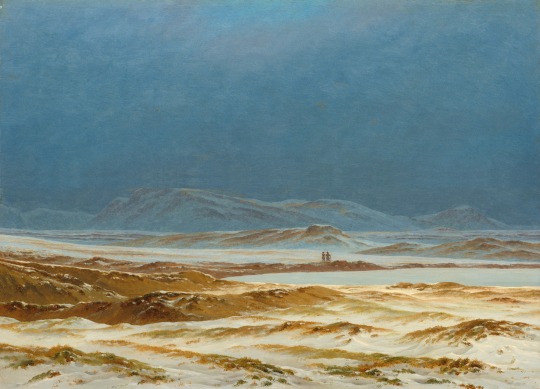
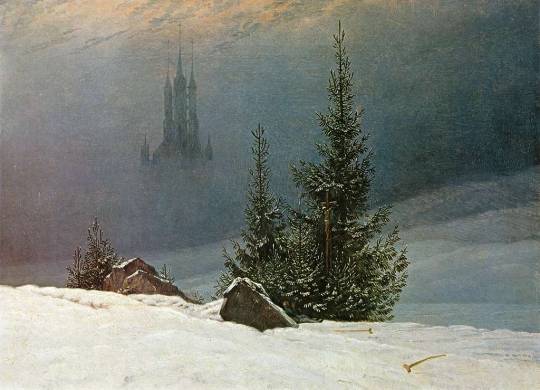
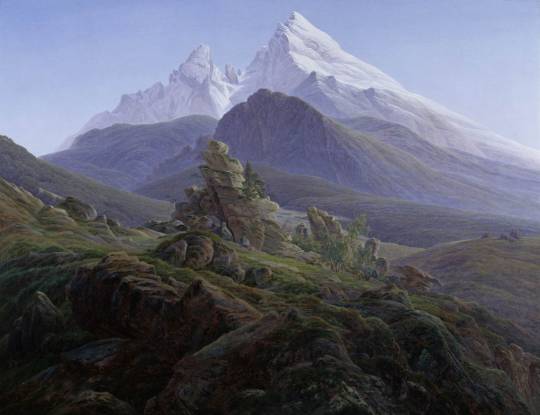



Wat? Der Mönch am Meer (1808-10), Nördische Frühlingslandschaft (1825), Winterlandschaft (1811), Der Watzmann (1824-1825), Wiesen bei Griefswald (1821-1822), Griefswald im Mondschein (1817) en Meeresufer im Mondschein (1835-1836) door Caspar David Friedrich
Waar? Tentoonstelling Caspar David Friedrich – Kunst für eine neue Zeit in Hamburger Kunsthalle, Hamburg
Wanneer? 6 maart 2024
Een klein jaar gelden besloot ik dat ik mijn verjaardag wilde vieren met een bezoek aan de grote overzichtstentoonstelling van het werk van Caspar David Friedrich, een schilder wiens werk ik zeer bewonder. Aanleiding voor de expositie is het feit dat de kunstenaar tweehonderdvijftig jaar geleden werd geboren. Later dit jaar volgen nog tentoonstellingen in Dresden en Berlijn. Op de laatste dag van vorig jaar boekte ik mijn reis en ook mijn ticket voor de tentoonstelling. Maar goed ook, want inmiddels is deze volledig uitverkocht. Dat is ook te merken. Al ruim voor het museum opengaat, staat er buiten een flinke rij te wachten om naar binnen te mogen. In de tentoonstellingszalen is het extreem druk. Bij de wat grotere olieverfschilderijen is dat minder een probleem, maar bij de dicht op elkaar hangende tekeningen en aquarellen in de eerste paar zalen is het een voetje voor voetje verder schuifelen.
Caspar David Friedrich werd in 1774 geboren in Greifswald, dat toen nog tot Zweden behoorde. Zijn voorkeurstechnieken waren aanvankelijk pentekeningen en aquarellen. Daarmee begint de tentoonstelling dan ook. Veel natuurstudies: bomen, bladeren, rotsen. Ook scènes met figuren, die soms wat aan de sentimentele kant zijn. Vanaf 1807 begon Friedrich olieverfschilderijen te maken.
Na de dood van zijn zus en vader schilderde Friedrich twee schilderijen die voor zijn doorbraak zorgden. Naast Abdij in het eikenbos was dat De monnik aan zee. Een lovende recensie door Heinrich von Kleist bij de Academietentoonstelling in 1810 zorgde dat de kunstenaar bij een groot publiek bekend werd. Beide werken werden aangekocht door de Pruisische koning. Ik zag De monnikaan zee eerder in Berlijn, waar het zijn thuis heeft in de Alte Nationalgalerie, en was er toen zeer van onder de indruk. Het is een groot schilderij. Driekwart van het doek geeft de lucht weer. Daaronder bevindt zich de zee en daaronder het strand. De overgangen zijn subtiel. Bovenin is de lucht tamelijk licht. Achter de wolken doet de zon zich vermoeden. Net boven het water is ze echter donker en dreigend, alsof er ieder moment een onweersbui kan losbarsten. De golven hebben witte schuimkoppen. Daarboven vliegen een paar meeuwen. Verder is er slechts één levend wezen te zien: een monnik die met zijn rug naar ons toe staat en uitkijkt over de zee. Een piepklein menselijk figuurtje tegenover de immense natuur. Uit onderzoek is gebleken dat Friedrich aanvankelijk een zeegezicht met meerdere schepen wilde schilderen, maar de scène steeds verder versoberde. Dit fascinerende, tot meditatie oproepende kunstwerk, is het resultaat.
De tegenstelling tussen kleine mens en grote natuur komt ook duidelijk tot uitdrukking op een werk dat nieuw voor me is: Nördische Frühlingslandschaft. Het komt uit de National Gallery of Art in Washington. We bevinden ons in een wat onbestemd landschap. Het bestaat uit een grotendeels besneeuwd gebied dat wordt onderbroken door een watervlakte. Op de achtergrond zien we enkele, niet al te spectaculaire, bergen. Het landschap maakt een desolate indruk. Toch is het niet totaal gespeend van menselijke aanwezigheid. Twee piepkleine figuurtjes bevolken de scène. Op het schilderij is het moeilijk te zien, maar op internet kon ik de mannetjes sterk vergroten. Ze lijken een boog en speer vast te hebben. Vermoedelijk zijn het dus jagers.
Winterlandschaft heb ik, net als Mönich am Meer, vaker gezien. Het komt uit de National Gallery in Londen. We zien een sneeuwlandschap. Daarin bevindt zich een groepje naaldbomen met daarvoor steenblokken. Tussen de bomen staat een kruisbeeld. Een man zit geleund tegen een rotsblok onder het kruis, zijn handen als in gebed tegen elkaar gedrukt. In de sneeuw liggen, een eind uit elkaar, twee krukken. Op de achtergrond zien we de contouren van een tamelijk monumentale kerk. Details daarvan worden door mist aan het oog onttrokken. Is de man genezen en heeft hij daarom zijn krukken weggegooid? Of wijst zijn biddende houding eerder op de hoop dat dit zal gebeuren? En waarom kiest de man ervoor om voor het kruisbeeld te gaan zitten in de sneeuw in plaats van door te lopen naar de kerk? Een intrigerend schilderij! Thema’s in dit schilderij, zoals kerken (of de ruïnes daarvan), kruisbeelden, bossen en rotsen komen we alle regelmatig tegen in werk van de kunstenaar.
Friedrich schilderde het bergmassief van de Watzmann. Hij had dit gebergte nooit zelf gezien, maar schijnt het te hebben overgenomen uit tekeningen van zijn leerlingen. De voorgrond lijkt wat vreemd bij het gebergte op de achtergrond. Dat is te verklaren uit het feit dat we twee totaal verschillende landschappen verenigd zien in één schilderij. De voorgrond is ontleend aan de Harz. Friedrich gaf landschappen in zijn tekeningen minutieus weer. Ook als hij zulke tekeningen overnam op schilderijen, deed hij dat met uiterste nauwkeurig. Hij had echter geen enkele moeite met het samenvoegen van twee totaal verschillende landschappen in één schilderij wanneer dat een gewenst totaalbeeld opleverde. In dit werk geen enkel menselijk wezen, zelfs geen dier. Alleen natuur.
Friedrich bezocht zijn geboorteplaats Griefswald regelmatig. Wiesen bei Griefswald is een heel symmetrische compositie. Het silhouet van het stadje vormt de overgang van het groene landschap naar de oneindige lucht. Ook Griefswald im Mondschein toont het silhouet van Friedrichs geboortestad , nu met visnetten op de voorgrond.
Meeresufer im Mondschein is het laatste olieverfschilderij dat Caspar David Friedrich schilderde. Het is zijn op één na grootste doek. Hij maakte het werk nadat hij getroffen was door een beroerte. Het duistere schilderij is vaak biografisch uitgelegd. De schepen zijn, net als de schilder, aan het eind van hun leven gekomen. Of die interpretatie de bedoeling van de schilder weergeeft, laat ik in het midden. Zeker is dat het werk een serene rust uitstraalt. Dat komt niet in de laatste plaats door de symmetrische opbouw. Het maanlicht, horizontaal en verticaal, komt in het midden van het doek samen.
Ondanks de (te) grote drukte op de tentoonstelling was het bij elkaar zien van zoveel werk van Friedrich de reis naar Hamburg zeker waard. Veel van zijn werken nodigen uit tot bezinning. Als je voor een doek als Der Mönch am Meer staat voel je je één met de monnik, geplaatst tegenover de grootsheid van de natuur. Een natuur waarmee wij mensen wel wat zorgvuldiger zouden mogen omgaan.
0 notes
Text
Absolutoria Week 3
V úterý jsem mělx domluvenou konzultaci než náš vedoucí odcestuje na půl měsíce, tak jsem samozřejmě grindilx koncept absolutorií v neděli a pondělí.
Neděle byla ve jménu fontíků, chtělx jsem něco osobitého, na první pohled rozpoznatelného co by fungovalo jak v logu tak na plakátech
Na konzultaci jsem odrpezentovalx svůj progress a vedoucí mě nasměroval trochu jiným směrem, který ovšem pro mě zní fakt exciting.
Doteď jsem pracovalx s "výbuchem" jako s vektorovým prvkem, s úmyslem ho měnit na té úrovni. Vedoucí ale navrhl experimentálnější přístup – pracovat s výbuchem na abstraktnější, multimediální úrovni. Jako příklad uvedl Kunsthalle Wien, která tímto způsobem pracuje s Orlicí a pokaždé používá jiné znázornění. Stejným způsobem bych používalx výbuch v několika rovinách a různé ho znázorňoval – to by byla hlavní část identity. Říkal mi ať se zatím nezaměřuju na fonty a barvy, ale raději ohýbám koncept a testuju jeho limity.
A pak jsem samozřejmě po zbytek týdne neudělalx nic. Respektive mělx jsem práci a pracovalx jsem na umprumkovem portfoliu, ale s absolutoriama už jsem nehnulx.

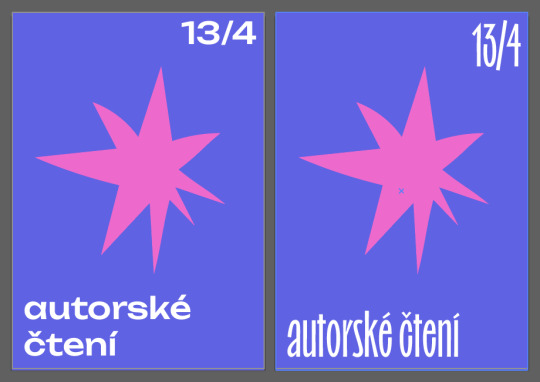
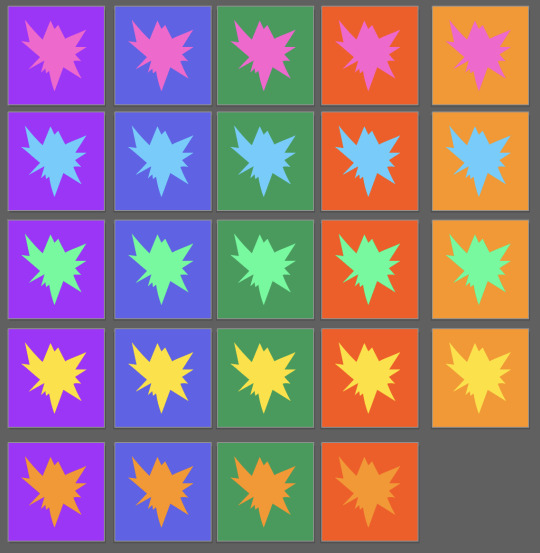

0 notes
Text
Evens Arts Prize 2021

The Evens Arts Prize 2021 is awarded to choreographer and dancer Marlene Monteiro Freitas, with a Special Mention of the Jury for artist Andrea Büttner.
The biennial Prize honours artists who engage with the challenges of contemporary Europe. The laureates were selected by an independent jury from nominations put forward by 25 representatives of cultural institutions across Europe.
The Jury of the 2021 edition was composed of Daniel Blanga Gubbay, Artistic Co-Director of Kunstenfestivaldesarts, Brussels; Manuel Borja-Villel, Director of Museo Reina Sofia, Madrid; Carlo Chatrian, Artistic Director of the Berlinale, Berlin; Anne Hilde Neset, Director of Kunstnernes Hus, Oslo; and Christine Standfest, Dramaturg, Curator, ImPulsTanz Festival, Vienna. The Jury Chair is Ernest Van Buynder, Honorary Chairman, M KHA, Antwerp.
Curated by Anne Davidian for Evens Foundarion.
The Laureate
Marlene Monteiro Freitas (born in 1979, Cape Verde) is a choreographer, artist, and the founder of the Lisbon-based production and dance company P.OR.K. With a career spanning over 15 years, Freitas has earned a reputation for creating visually and sensorially rich performances.
“Freitas invests in the construction of worlds where lush, evil, illness, madness and opulence are underlined – excesses that the choreographer proposes us to meet through the confrontation with surprising visual scenarios and performers’ strong physical language,” explain Tiago Rodrigues, Director, Festival d’Avignon, and Cristina Grande, Head of the Performing Arts Department, Serralves Foundation, Porto, who nominated Freitas for the Prize.
Freitas' recent creations include Pierrot Lunaire (2021), which premiered at Wiener Festwochen, Mal – Embriaguez Divina (2020), 2020 Bacchae - Prelude to a Purge (2017). In 2018 La Biennale di Venezia awarded the artist the Silver Lion for Dance.
Jury statement
The jury recognised the singular and compelling force of the choreographic worlds created by the artist Marlene Monteiro Freitas. Daring and experimental, their sensorial immediacy draws discrete audiences into contact with a dazzling interplay of bodies, energies and effects.
The jury particularly praised the artist’s rich and layered scrutiny of European cultural traditions and their legacies. Often merging genres, myths and allegories, the works deftly undermine implicit power structures, reimagining traditions not as fixed absolutes, but as fluid encounters between subjectivities.
The Special Mention of the Jury
The jury chose to award a Special Mention to Berlin-based visual artist Andrea Büttner. The Special Mention distinction was introduced in 2019 as a way to recognise outstanding work and contributions to the European art scene.
Andrea Büttner (1972, Stuttgart, Germany) connects art history with social and ethical issues, exploring broad-ranging topics such as poverty, work, community, belief, botany, Catholicism, and philosophy. Her work is based on thorough research into specific areas or situations and is articulated through diverse formats including printmaking, sculpture, painting, photography, and video. "The artistic project of Andrea Büttner proposes a bridge between different historical eras and worldviews, showing ways of being together that arise out of the gaps that divide people", explains Lars Bang Larsen, Co-Director, Art Hub, Copenhagen, who nominated the artist for the Prize.
Shortlisted for the Turner Prize in 2017, Büttner had numerous solo exhibitions at institutions worldwide, including Kunstmuseum Basel (2023), Bergen Kunsthall (2018); Hammer Museum (2017); Kunsthalle Wien (2016); Walker Art Center (2015); Tate Britain (2014). She teaches at Kunsthochschule Kassel and has authored several books.
Jury statement
The Special Mention of the Jury is given to the artist Andrea Büttner for her rich, multifaceted work, that composes and dismantles relationships between cultural registers, philosophical and aesthetic traditions of Western modernity, and European histories of fascism and exploitation.
With her in-depth research into the systems of value and practices of craftmanship, her works weave intricate connections between dignity, shame, religion, care, and labour. The jury particularly noted Büttner’s ability to uncover the transformative potentials of collaborative processes, illuminating otherwise shrouded forms of resistance, togetherness, and community.
The nominators of the Evens Arts Prize 2021
Aaron Cesar, Director, Delphina Foundation, London; Andrea Lissoni, Director, Haus der Kunst, Munich; Bart de Baere, Director, M HKA, Antwerp; Lars Bang Larsen, Co-Director, Art Hub, Copenhagen; Beatrice Fiorentino, International Film Critics Week, Venice Film Festival; Björn Gottstein, Artistic Director, Donaueschinger Musiktage, Donaueschingen; Cristina Grande, Head of the Performing Arts Department, Serralves Foundation, Porto; Christophe Slagmuylder, Artistic Director, Wiener Festwochen, Vienna; Christos Carras, Director, Onassis Foundation, Athens; Ekaterina Degot, Steirischer Herbst, Graz; Eva Sangiorgi, Artistic Director, Viennale, Vienna; Farid Rakun, Artistic Co-Director, documenta 15; Frank Madlener, Director, IRCAM, Paris; Julia Eckhardt, Artistic Director, Q-02, Brussels; Maialen Beloki Berasategui, Deputy Director, San Sebastien Film Festival; Malgorzata Ludwisiak, Board Member, CiMAM; Marcella Lista, Chief Curator, Centre Pompidou, Paris; Marta Keil, Director, Performing Arts Institute, Warsaw; Mathilde Henrot, Selector, Locarno Film Festival; Niklas Engstrøm, Artistic Director, CPH:DOX, Copenhagen; Silvia Fanti, Artistic Director, Live Arts Week /Xing, Bologna; Teja Reba, Program Director, City of Woman, Ljubliana; Tiago Rodrigues, Artistic Director, Teatro National Dona Maria II, Lisbon; and Virve Sutinen, Artistic Director, Tanz im August Festival, Berlin.
More about the Evens Arts Prize
📷 Marlene Monteiro Freitas ©Peter Hönnemann | Andrea Büttner ©Julia Zimmermann
0 notes
Photo

Film still from Babette Mangolte’s Calamity Jane & Delphine Seyrig: A Story, 2020 – in the exhibition Defiant Muses: Delphine Seyrig and the Feminist Video Collectives of 1970s an 1980s France at Kunsthalle Wien (Vienna)
13 notes
·
View notes
Text
Sheelasha Rajbhandari & Hit Man Gurung
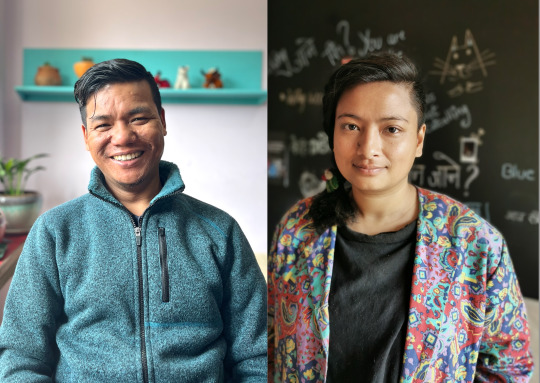
Mardi 12 décembre 2023 à 17h (heure de Paris)
Tuesday December 12th 2023, 5pm (Paris time)
Co-commissaires de la 17e Biennale Jogja 2023 et de Colomboscope 2024 / Co-curators for 17th Biennale Jogja 2023 and Colomboscope 2024
Sheelasha Rajbhandari (née en 1988) est une artiste et une curatrice opérant partir de Katmandou. Ses travaux s'appuient sur une lignée de féminités incarnées et spéculatives pour remettre en question le positionnement des femmes à travers le temps, les paysages et les cosmologies. Sa pratique incite à réfléchir au-delà de la conception néolibérale du temps, afin de décentrer les structures patriarcales qui perpétuent les cycles d'extraction industrielle et d'épuisement individuel. Pour elle, l'art consiste à créer un espace pour l'action collective. Ce questionnement alimente sa récente approche artistique et curatoriale qui recompose les notions d'indigénéité, de genre, de valeur et de productivité. Elle a été co-commissaire de la Triennale Katmandou2077, du Pavillon du Népal à la Biennale de Venise (2022), de "Garden of Ten Seasons" à Savvy Contemporary, Berlin (2022) et de "12 Baishakh", Bhaktapur (2015) aux côtés de Hit Man Gurung. Son installation textile a été exposée au Museum of Art and Design de New York (2022) et au Footscray Art Center de Melbourne (2022). Son installation dans l'exposition itinérante " A beast, a god and a line " (2018-2020) a été présentée à Para Site, Hong Kong ; TS1, Yangon ; Museum of Modern Art, Varsovie ; Kunsthall, Trondheim ; et MAIIAM Contemporary Art Museum, Chiang Mai. Elle a également été artiste en résidence au Bellas Artes Projects (2019) et au Para Site (2017). Elle a en outre exposé au Weltmuseum Wien (2019) et à la Triennale de Katmandou (2017). Dans le cadre de son collectif, elle a participé au Dhaka Art Summit (2020) et à la Biennale de Sydney (2020). Elle est également cofondatrice d'ArtTree Nepal, un collectif d'artistes, et d’un espace artistique, Kalā Kulo.
Hit Man Gurung (né en 1984) est un artiste et un curateur basé à Katmandou. Ses diverses pratiques s'intéressent au tissu des mobilités humaines, aux frictions de l'histoire et aux échecs des révolutions. Bien qu'ancrés dans l'histoire récente du Népal, ses travaux démêlent un réseau complexe de liens de parentés et d'extractions à travers les géographies qui soulignent l’exploitation inhérente au capitalisme. Ces récits tournent autour des expériences vécues par les migrant·e·s, pris·e·s entre une industrie transnationale déshumanisante fondée sur le travail, et un État-nation apathique. Il invoque en outre les méthodologies et épistémologies indigènes pour reconfigurer dans ses fondements la praxis artistique contemporaine. Il a été co-commissaire de la Triennale de Katmandou2077 (2022), du Pavillon du Népal à la Biennale de Venise (2022), de "Garden of Ten Seasons" à Savvy Contemporary, Berlin (2022) et de "12 Baishakh", Bhaktapur (2015), aux côtés de Sheelasha Rajbhandari. Il a également cofondé ArtTree Nepal, un collectif d'artistes, et l’espace artistique Kalā Kulo. Il a participé à des expositions à SAVVY Contemporary, Berlin (2020) ; Biennale de Sydney (2020) ; Artspace Sydney (2019) ; Weltmuseum Wien (2019) ; Kathmandu Triennale (2017) ; Yinchuan Biennale (2016) ; Para Site, Hong Kong (2016) ; Asia Pacific Triennial of Contemporary Art, Brisbane (2015-16) ; et Dhaka Art Summit (2014, 2016, 2018, 2020).
[EN] Sheelasha Rajbhandari (b. 1988) is an artist and curator based out of Kathmandu. Her works draw upon an embodied and speculative lineage of femininities to question the positioning of women across time, landscapes, and cosmologies. Her practice is a provocation to reflect beyond neo-liberal conception of time in order to decenter patriarchal structures that perpetuate cycles of industrial extraction and individual exhaustion. For her, art-making is about making space for collective action. This questioning feeds into her recent artistic and curatorial approach that recompose notions of Indigeneity, gender, worth, and productivity. She co-curated the Kathmandu Triennale 2077, Nepal Pavilion at Venice Biennale (2022), ‘Garden of Ten Seasons’ at Savvy Contemporary, Berlin (2022) and ’12 Baishakh,’ Bhaktapur (2015) alongside Hit Man Gurung. Her textile installation was exhibited at Museum of Art and Design; NewYork (2022), Footscray Art Center; Melbourne ( 2022). Her installation in the traveling exhibition “A beast, a god and a line” (2018-2020) was presented at Para Site, Hong Kong; TS1, Yangon; Museum of Modern Art, Warsaw; Kunsthall, Trondheim; and MAIIAM Contemporary Art Museum, Chiang Mai. She has also been an artist in residence at the Bellas Artes Projects (2019) and Para Site (2017). She has furthermore exhibited at Weltmuseum Wien (2019); and Kathmandu Triennale (2017). As a part of her collective, she has been a part of Dhaka Art Summit (2020) and Biennale of Sydney (2020). She is also the co-founder of ArtTree Nepal, an artist collective and Kalā Kulo, an arts initiative.
Hit Man Gurung (b. 1984) is an artist and curator based in Kathmandu by way of Lamjung. Gurung’s diverse practice concerns itself with the fabric of human mobilities, frictions of history, and failures of revolutions. While rooted in the recent history of Nepal, his works unravel a complex web of kinships and extraction across geographies that underscore the exploitative nature of capitalism. These narratives revolve around the lived experiences of migrants caught between a dehumanizing transnational labor-based industry and an apathetic nation-state. He furthermore invokes Indigenous methodologies and epistemologies to fundamentally reconfigure contemporary artistic praxis. Gurung is one of the curators for 17th Biennale Jogja 2023 and Colomboscope 2024. He was co-curator for the Kathmandu Triennale 2077 (2022), Nepal Pavilion at Venice Biennale (2022), ‘Garden of Ten Seasons’ at Savvy Contemporary, Berlin (2022) and ’12 Baishakh,’ Bhaktapur (2015) alongside Sheelasha Rajbhandari. He has also co-founded ArtTree Nepal, an artist collective and Kalā Kulo, an arts initiative. He has participated in exhibitions at SAVVY Contemporary, Berlin (2020); Biennale of Sydney (2020); Artspace Sydney (2019); Weltmuseum Wien (2019); Kathmandu Triennale (2017); Yinchuan Biennale (2016); Para Site, Hong Kong (2016); Asia Pacific Triennial of Contemporary Art, Brisbane (2015-16); and Dhaka Art Summit (2014, 2016, 2018, 2020)
Programmation et prochains rendez-vous sur ce site ou par abonnement à la newsletter : [email protected]
Pour regarder les séminaires antérieurs : http://www.vimeo.com/sysk/
Séminaire conçu et organisé par Patricia Falguières, Elisabeth Lebovici et Natasa Petresin-Bachelez et soutenu par la Fundación Almine y Bernard Ruiz-Picasso para el Arte
1 note
·
View note
Text

GPC Streams (#4) Vienna Plays Itself
Online Screening
Conceived by Elena Cooke und Katrin Euller
Artists: Miae Son, Charlotte Gash, Laura Nitsch
22/11/2023 - 28/11/2023
21:00 - 22:11 (in your timezone)
Each evening on GPC Online Screen
http://streaming.goldenpixelcoop.com
Vienna Plays Itself presents works by three feminist filmmakers and artists, each with a linking thread: Vienna. These artists have all studied, lived and worked in Vienna and their works reflect on their experiences. Through the artist's different critical approaches, also towards image production, we witness encounters and struggles with identities, bodies, and art politics.
Miae Son’s work, ‘Bigger’, takes a poetical and critical approach towards the dominance of western philosophy. It addresses the difficulties of a migrant woman’s body from her everyday life in a classical European living space.
Blurring the boundaries between documentary and fiction, in ‘Tunnel of Inclusion’, Charlotte Gash uses Vienna’s art scene to act, and then presents it back like a mirror to the art world.
In ‘Violett’, Laura Nitsch discusses the historical period of Red Vienna in terms of in/visibilities, class differences and the construction of sexuality and gender.
Programme:
Miae Son: Bigger, 2022, Austria, 8:57 min.
Charlotte Gash: Tunnel of Inclusion;
Behind the Scenes Documentary, 2023, Austria, 28:58 min.
Laura Nitsch: VIOLETT, 2023, Austria, 31:40 min
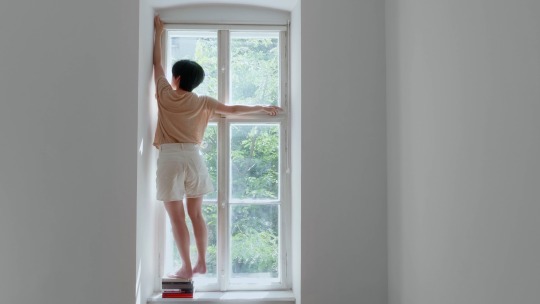
Miae Son: Bigger, 2022, Austria, 8:57 min.
The artist, as the protagonist, is standing at a window in an old Viennese apartment. She struggles to fix a broken blind mounted high above. She climbs the narrow windowsill, stretches her body but falls short. Placing books by male philosophers who have shaped European discourse as support, she finally reaches the blind.The texts translated into Korean indicate, on the one hand, the need for a sense of linguistic security and on the other, they reveal an inner compulsion to appropriate this European canon, which is shaped by power relations. Bigger addresses the difficulties of a migrant woman’s body from her everyday life in a classical European living space and the domination of western culture.
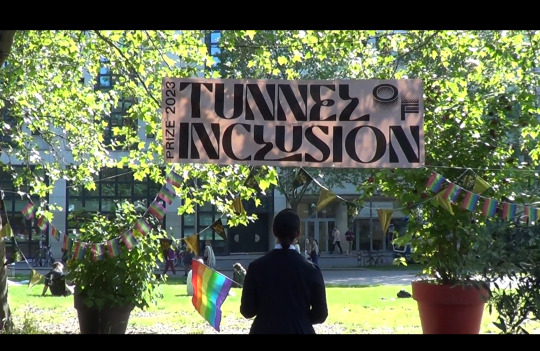
Charlotte Gash: Tunnel of Inclusion; Behind the Scenes Documentary, 2023, Austria, 28:58 min.
Tunnel of Inclusion; Behind The Scenes Documentary is a behind the scenes mockumentary style persiflage of installing a prize exhibition showcasing the young Austrian art scene, on display at Kunsthalle Karlsplatz Wien. Tunnel of Inclusion; Behind The Scenes Documentary follows CURATOR hiring a film crew to make a documentary about her first institutional exhibition. Problems arise on the way towards the day of the opening, following the ARTISTS, DIRECTOR OF INSTITUTION, ASSISTANTS and the CURATOR work towards the fine art academies award exhibition, as characters CHARLOTTE, ARTIST 1, ARTIST 2 and ART BITCH prepare for the award ceremony where the prize will be announced.
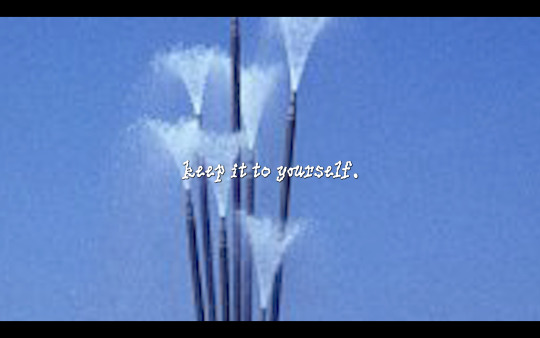
Laura Nitsch: VIOLETT, 2023, Austria, 31:40 min.
VIOLETT is an experimental documentary, concerned with the in/visibility of class differences in the historical construction of sexuality and desire. Putting emphasis on the geopolitical context of Red Vienna (1918-1934), the film approaches the tension between in/visibility, memory and history writing.
0 notes
